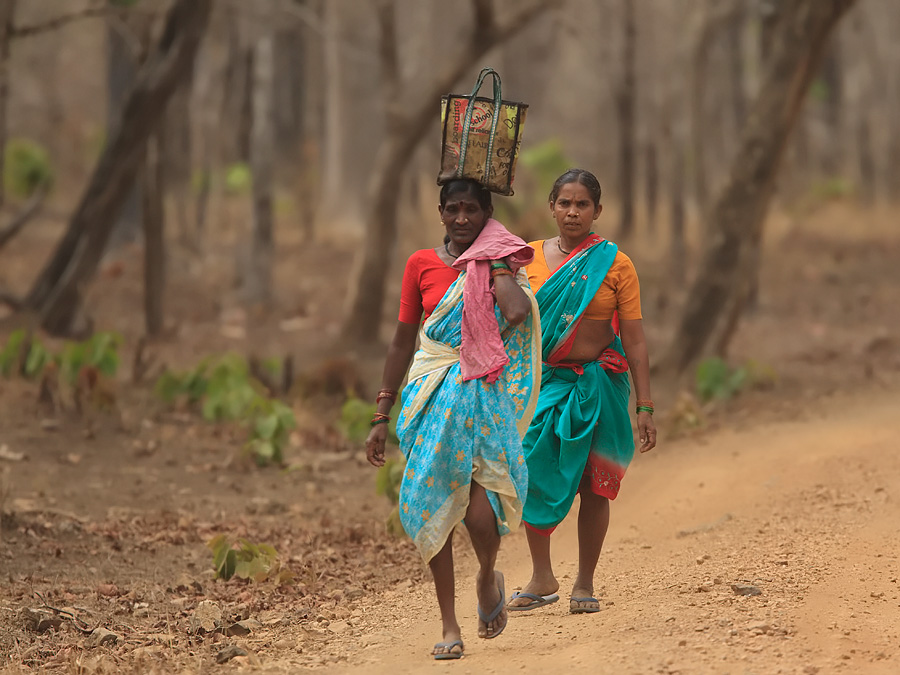Protected areas and parks in South Asia are tasked with protecting biological diversity and supporting local livelihood needs, particularly so in human-dominated landscapes of India and Nepal. Krithi K. Karanth and Sanjay Nepal examine attitudes and perceptions of local residents living around five well known parks in South Asia, namely Annapurna, Chitwan, Ranthambore, Kanha and Nagarahole. These are the highlights of their study from a paper published in the journal Environmental Management.
- Surveys and interviews with 777 local residents were conducted in and around these five parks
- Annual wildlife tourism is growing rapidly in these parks, but local people in Nepal have more favorable attitudes compared to people in India.
- Most (81%) of people viewed the parks favorably.
- Benefits to locals from parks include access to fuel wood, fodder and other park resources and costs to local people include crop and livestock losses to wildlife.
- Many (69%) of the people perceived park management negatively.
- Particularly vulnerable people appear to be small landholders; households that rely heavily on park resources or are less educated, and experience severe losses to wildlife.
- Overall positive attitudes of local people toward parks present a huge opportunity to build local support for conservation.
Study sites
Three parks were selected in India — Nagarahole, Kanha and Ranthambore and two in Nepal — Chitwan and Annapurna.
Methods
In 2004 and 2009, interviews were conducted with 777 people living around these parks in Nepal and India respectively.
The Results
- Local residents derived their income mainly from agriculture (66% in India and 46% in Nepal), with most of them (80%) owning their land.
- Locals around Nepal parks were much more favorable towards tourism growth and felt that tourism strengthened cultural traditions. Residents thought tourism is offsetting losses in Annapurna, Chitwan and Ranthambore, but increased the cost of living around Indian parks.
- Locals around parks in Nepal were much more favorable towards tourism growth and felt that tourism strengthened cultural traditions. Residents in Annapurna, Chitwan and Ranthambore, felt that tourism was offsetting losses. Residents around all Indian parks felt that tourism was increasing cost of living.
- Many people (81%) were dependent on resources from the park (including grazing, plant parts and non-timber forest products) but less inclined to report hunting and fishing practices.
- Majority (90%) experienced conflicts with wildlife, particularly crop and livestock loss. Unfortunately, most people (91%) were unaware of compensation schemes and many reported not receiving compensation for losses from authorities.
- Injury and death to humans was reported to be very low (<1%).
- Residents viewed park authorities and management efforts negatively. Reasons were restrictions placed on park entry, resource collection and grazing, and lack of concern shown to local residents. Confrontations with authorities were significant (>50%) in Ranthambore and Kanha.
- Conservation in these human-dominated landscapes requires the support of local people. The overall positive attitudes towards parks and wildlife present a huge opportunity to engage and increase local support. This will require sustained efforts to expand tourism benefits to locals, improve compensation for losses to wildlife, improve relationships with park managers and create alternative livelihoods to decrease dependence on park resources. Extending benefits to smaller landholders, highly resource-dependent people, households subject to higher income losses due to human-wildlife conflicts, and less educated residents are particularly promising to balance costs and losses from living in and around parks in India and Nepal.
Increasing awareness and support for parks among local people
Local people are often the most neglected group when it comes increasing support for protecting and managing parks in South Asia. Their daily interactions and strong ties to these parks provide a huge advantage to building long-term conservation efforts. However, growing negative perceptions about the purpose of these parks, and conflicts with park authorities and private enterprises are making it increasingly difficult to gain support for conservation initiatives. This is evidenced from the strong opposition to simple efforts to establish ecologically sensitive zones around parks in India. There is an urgent need to educate and involve local residents living around our parks in managing these landscapes adjacent to these parks.


 CI is a non-profit, non-commercial portal that aims to facilitate wildlife and nature conservation by providing reliable information and the tools needed to campaign effectively.
CI is a non-profit, non-commercial portal that aims to facilitate wildlife and nature conservation by providing reliable information and the tools needed to campaign effectively.